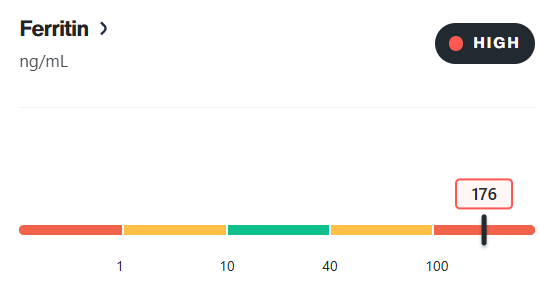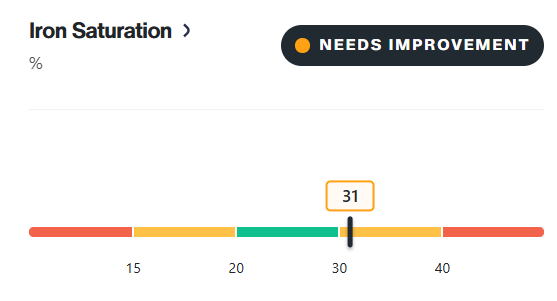Thanks for the reply. Very interesting re: Bill F’s opinion. Anyone in the forum have any thoughts on this?
https://www.hdfcergo.com/blogs/health-insurance/what-are-the-side-effects-of-donating-blood
My assumption before reading these was an impact on WBC antibodies etc would be temporary and these seem to confirm this.
I would like to see evidence for this claim.
New Insights into Red Blood Cell Microcytosis upon mTOR Inhibitor Administration
The aim of this study was to evaluate the effect of everolimus … on red blood cell parameters in the context of iron homeostasis in patients with tuberous sclerosis complex (TSC) and evaluate its effect on cell size in vitro. Everolimus has a significant impact on red blood cell parameters in patients with TSC. The most common alteration was microcytosis. The mean MCV value decreased by 9.2%, 12%, and 11.8% after 3, 6, and 12 months of everolimus treatment. The iron level declined during the first 3 months, and human soluble transferrin receptor concentration increased during 6 months of therapy. The size of K562 cells [a myelogenous leukemia cell line] decreased when cultured in the presence of 5 μM everolimus by approximately 8%.
The addition of hemin to the cell culture with 5 μM everolimus did not prevent any decrease in cell size. The stage of erythroid maturation did not affect the response to everolimus.
Our results showed that the mTOR inhibitor everolimus caused red blood cell microcytosis in vivo and in vitro. This effect is not clearly related to a deficit of iron and erythroid maturation. This observation confirms that mTOR signaling plays a complex role in the control of cell size.
IJMS | Free Full-Text | New Insights into Red Blood Cell Microcytosis upon mTOR Inhibitor Administration
Certainly the case for me is an approx. 11% drop since starting rapamycin.
Its an interesting issue. MCV is seen as part of Morgan Levine’s equation as something where smaller is better. The variations are small unless people have things like myeloma or anemia.
More on the benefits of lower iron levels…
Therapeutic inhibition of ferroptosis in neurodegenerative disease
Published:August 30, 2023
Genetics, genomics, and neuroimaging point toward iron dysregulation as an important node in neurodegenerative disease.
Iron chelators have been tried in the clinic, but with limited efficacy.
Ferroptosis is an emerging mechanism linking brain iron overload to neuronal death.
The development of potent ferroptosis inhibitors could prevent ferroptosis and limit neurodegeneration in amyotrophic lateral sclerosis (ALS), Alzheimer’s, Parkinson’s, and other diseases with brain iron dysregulation.
Paper (Paywalled)
https://www.cell.com/trends/pharmacological-sciences/fulltext/S0165-6147(23)00169-4
Since I have been on rapamycin my iron levels significantly dropped. I don’t know if this is a coincidence or not. I now have to supplement just to keep my ferritin and hemoglobin in the low normal range.
Related to the issue of Iron and mTORC1 inhibition… a new study:
Ebselen, Iron Uptake Inhibitor, Alleviates Iron Overload-Induced Senescence-Like Neuronal Cells SH-SY5Y via Suppressing the mTORC1 Signaling Pathway
Increasing evidence highlights that excessive iron accumulation in the brain plays a vital role in neuronal senescence and is implicated in the pathogenesis of age-related neurodegenerative diseases, including Alzheimer’s disease (AD) and Parkinson’s disease (PD). Therefore, the chemical compounds that eliminate an iron overload may provide better protection against oxidative stress conditions that cause the accumulation of senescent cells during brain aging. Ebselen has been identified as a strongly useful compound in the research on redox biology mechanisms. We hypothesized that ebselen could alleviate an iron overload-induced oxidative stress and consequently reverses the senescence-like phenotypes in the neuronal cells. In the present study, SH-SY5Y cells were treated with ferric ammonium citrate (FAC) before ebselen, and the evaluation of the cellular iron homeostasis, the indicators of oxidative stress, and the onset of senescence phenotypes and mechanisms were carried out accordingly. Our findings showed that ebselen ameliorated the FAC-mediated iron overload by decreasing the expression of divalent metal transporter 1 (DMT1) and ferritin light chain (FT-L) proteins. In contrast, it increased the expression of ferroportin 1 (FPN1) protein and its correlation led to a decrease in the expression of the cytosolic labile iron pool (LIP). Furthermore, ebselen significantly reduced reactive oxygen species (ROS) and rescued the mitochondrial membrane potential (ΔΨm). Notably, ebselen restored the biomarkers of cellular senescence by reducing the number of senescence-associated β-galactosidase (SA-β-gal) positive cells and senescence-associated secretory phenotypes (SASP). This also suppressed the expression of p53 protein targeting DNA damage response (DDR)/p21 cyclin-dependent kinase (CDK) inhibitor through a mTORC1 signaling pathway. Potentially, ebselen could be a therapeutic agent for treating brain aging and AD by mitigating iron accumulation and restoring senescence in SH-SY5Y cells.
Open Access Paper:
Hello, I actually observed that too. Just did a time series analysis of my iron levels and see the same pattern.
AI says, this could be a consquence of extended Sirolimus intake.
I am supplementing iron now.
So in summary, lower iron is better for longevity??? BTW, high ferritin level may not necessarily be high iron. Any inflammation in your body will cause the ferritin level to elevate. My question is can you have high ferritin and low iron at the same time??? I am thinking yes… but can someone confirm.
After a few months of rapamycin 6mg/1-week, my numbers on a blood test 08/08/25 by LabCorp. My ferritin was flagged as “LOW” by LabCorp:
Iron Bind.Cap.(TIBC) - 405 ug/dL (ref. 250 - 450)
UIBC - 330 ug/dL (ref. 111 - 343)
Iron - 75 ug/dL (ref. 38 - 169)
Iron Saturation - 19 % (ref. 15 - 55)
Ferritin - 20 ng/mL LOW (ref. 30 - 400)
RBC - 5.2 x10E6/uL (ref. 4.14 - 5.8)
Hemoglobin - 15.4 g/dL (ref. 13 - 17.7)
Hematocrit - 48.2 % (ref. 37.5 - 51)
MCV - 93 fL (ref. 79 - 97)
About three months before I took rapamycin on a test at UCLA, 10/23/24 my numbers were:
Ferritin - 39 ng/mL (ref. 8 - 350)
Iron - 127 mcg/dL (ref. 41 - 179)
Iron Binding Capacity - 354 mcg/dL (ref. 262 - 502)
Saturation - 36 %
RBC - 4.86 (ref. 4.41 - 5.95 x10E6/uL)
Hemoglobin - 15.1 g/dL (ref. 13.5 - 17.1)
Hematocrit - 45.2 % (ref. 38.5 - 52)
MCV - 93 fL (ref. 79.3 - 98.6)
Note the different reference intervals between these two labs. Ferritin was within normal range on this reading, and at 39 would have been within range of LabCorp - but the LabCorp reading of 20 would’ve been within range according to the UCLA lab, while being flagged as “LOW” by LabCorp. Either way, FWIW both iron and ferritin dropped substantially in the second reading (after rapamycin).
My most recent blood work confirms that I have high ferritin but only moderately high iron saturation.


I don’t have my figures to hand but the rate at which I do blood tests requires me to supplement with iron to avoid a deficiency